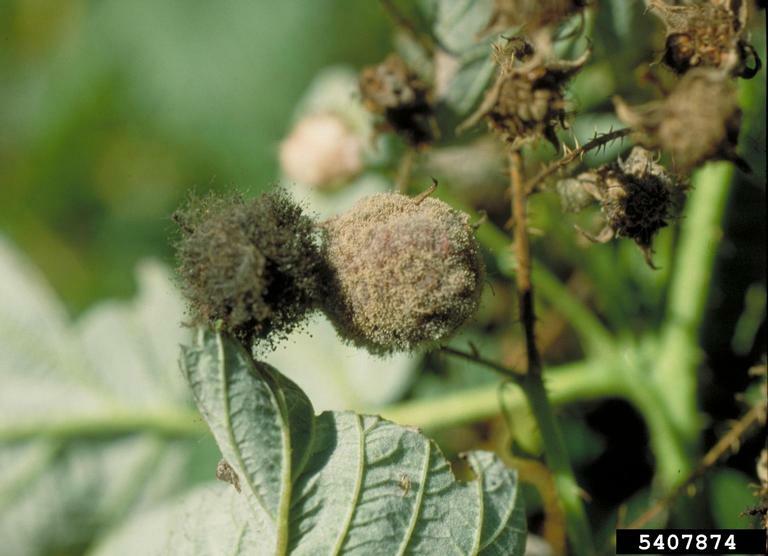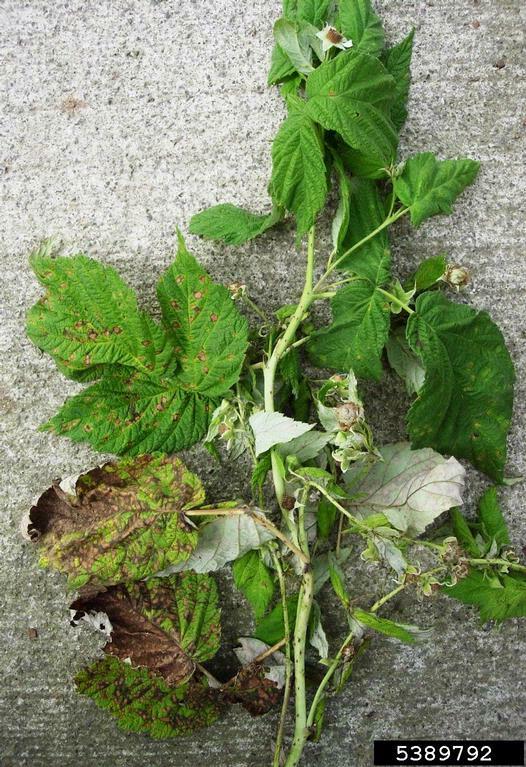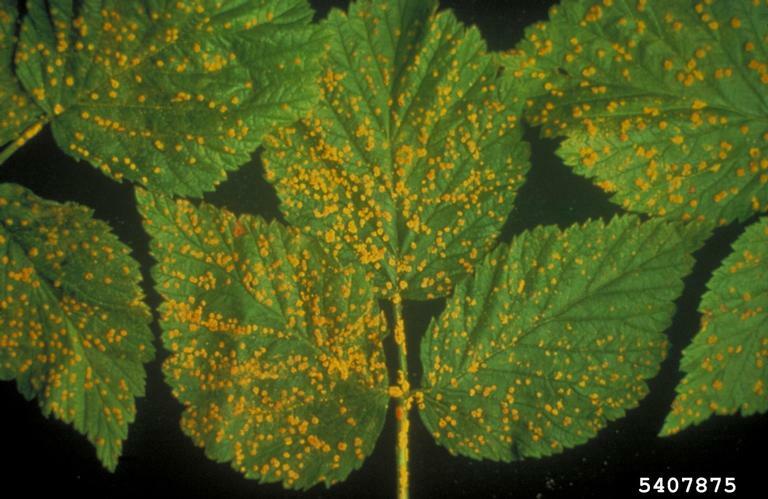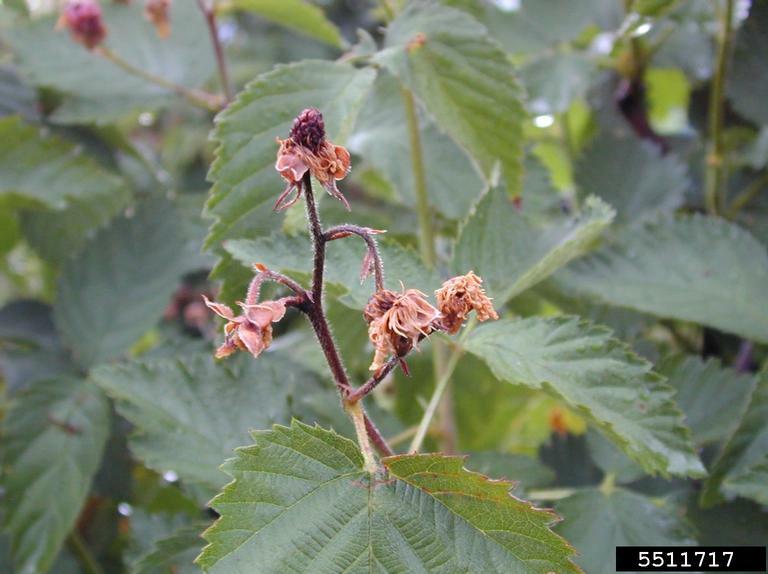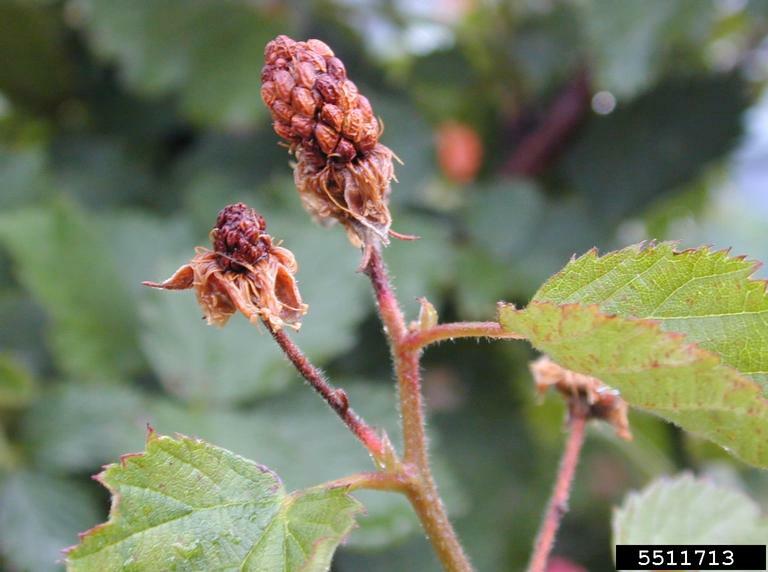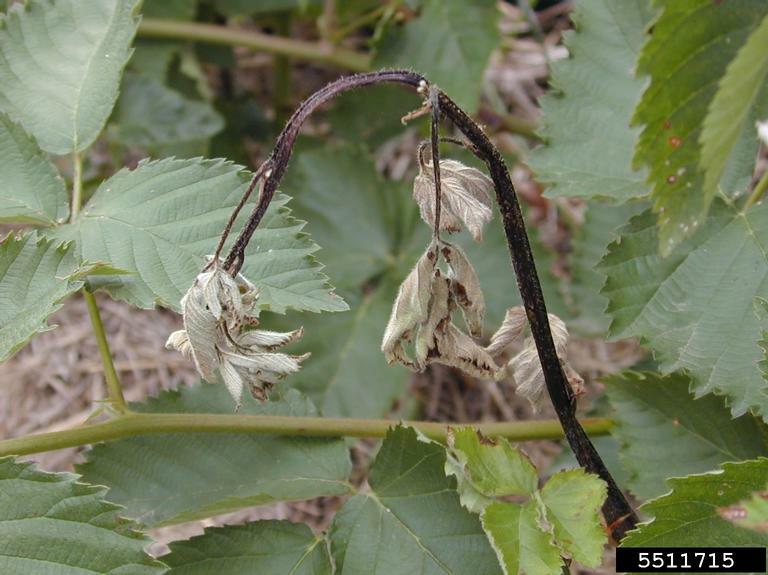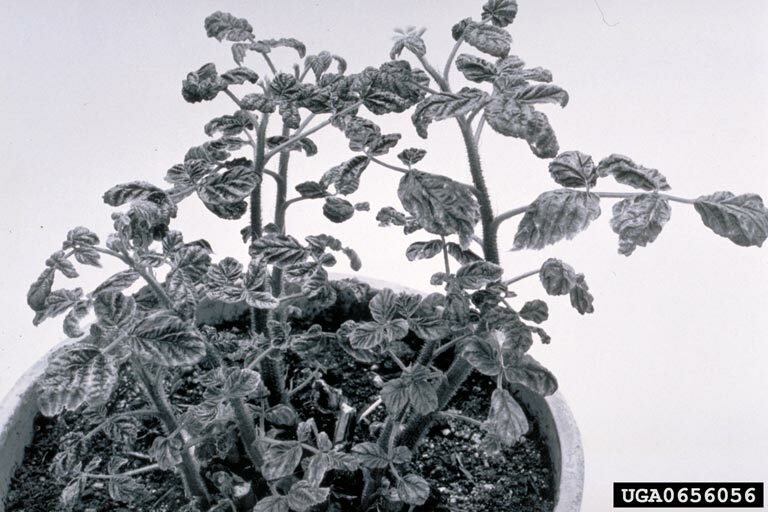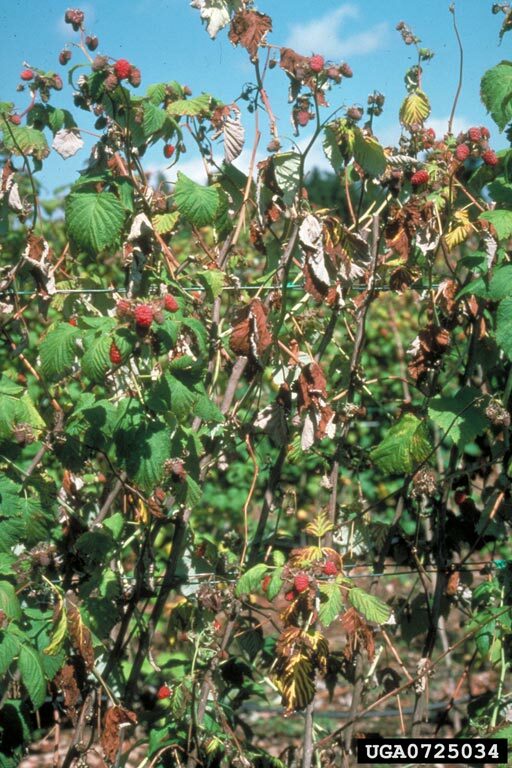Raspberry
Description
Uses
Propagation
References
Common Pests and Diseases
Diseases
Category : Fungal
Cane blight Leptosphaeria coniothyrium
Symptoms
Purple black cankers form at wounds on young canes; cankers enlarge to encircle cane and cause wilting and death of lateral shoots; infected canes are often cracked and brittle, breaking easily; black specks (fungal fruiting bodies) may become visible in the cankers.
Cause
Fungus
Comments
Spread by rain splash from infected to healthy canes.
Management
Always plant raspberries in full sun and in an area with good drainage; plant only certified planting material; avoid over fertilizing plants; remove and destroy fruiting canes immediately after harvest; if pruning is necessary then make cuts during dry weather to allow wounds to heal before wet weather; control insect pests which may cause wounds to the canes such as crown borers and stem girdlers.Gray mold Botrytis cinerea
Symptoms
Blasting symptoms (browning and drying) of one, or a cluster, of blossoms; soft, light brown areas on fruits which enlarge rapidly; berries become mummified and is covered in a gray powdery substance;
Cause
Fungus
Comments
Disease emergence favors high moisture and slow drying areas.
Management
Always plant raspberries in full sun and in an area with good drainage; plant only certified planting material; avoid over fertilizing plants; remove and destroy fruiting canes immediately after harvest; practice good weed management around the raspberry canes; harvest fruit frequently and during dry weather; remove and destroy diseased berries to reduce inoculum.Raspberry leaf spot Sphaerulina rubi
Symptoms
The symptoms appear on young leaves as small dark green circular spots. As the disease progress the spots become light tan to gray color. Later the infected tissue may fall out. Severely infected leaves may fall off prematurely.
Cause
Fungus
Comments
Spores are spread by splashing water.
Management
Remove infected crop debris and burn them. Provide proper air circulation around the plant. If the disease is severe, spray suitable fungicide.Spur blight Didymella applanata
Symptoms
Purple-brown lesions on the stem just under the leaf or bud; lesions are usually on the lower portion of the stem; bark splitting on canes lengthways; brown triangular lesions may form on edges of leaves.
Cause
Fungus
Comments
Fungus is able to overwinter on diseased canes and disperse during rainfall and active wind.
Management
Increase air circulation within the canopy by reducing the frequency of periods of leaf wetness (avoid overhead irrigation where possible) and thinning plants to reduce crowding; avoid excessive application of fertilizer, particularly nitrogen; practice good weed management; if disease is severe then an an application of appropriate fungicide may be merited.Yellow rust Phragmidium rubi-ideai
Symptoms
Yellow-orange pustules on underside of leaves; premature death of leaves, increased cold weather injury.
Cause
Fungus
Comments
Pathogen is not systemic and will not spread within the plant; spores are transmitted by wind.
Management
Improve air circulation around the plants by pruning; removal of entire floricane and the first flush of growth on the primocane can greatly reduce the amount of inoculum but is not alwasy economically feasible; growing raspberries in tunnels can greatly reduce incidence of disease if plants are protected before conditions are favorable to the rust pathogen.Category : Bacterial
Fire blight Erwinia amylovora
Symptoms
The infected cane tip become blackened, bend over and die which resembles the “shepherd’s crook” appearance. The affected cane may ooze cream colored bacteria under high humid conditions. If the infection continues down the cane, the leaf veins and surrounding tissue of the midvein turn black. Later whole leaf may wither and die. The infected berries do not mature, become brown, dry up, become very hard and remain on pedicel. Generally the infection is restricted to young growth of the plant.
Cause
Bacterium
Comments
The pathogen is transmitted by wind, rain splash and insects.
Management
Use healthy and disease free seed materials. Remove and burn the infected parts.Category : Viral
Leaf curl Raspberry leaf curl virus (RLCV)
Symptoms
Leaflets small and rounded with margins curving downward and inward; new shoots yellowish, stiff, brittle, and shorter than previous year.
Cause
Virus
Comments
Transmitted by aphids.
Raspberry bushy dwarf Raspberry bushy dwarf virus (RBDV)
Symptoms
Yellowing leaves; reduction in cane height; crumbly fruit; reduced plant vigor.
Cause
Virus
Comments
Symptoms are not consistent from year to year; virus is transmitted through pollen.
Raspberry mosaic disease
Black raspberry necrosis virus (BRNV)
Raspberry leaf mottle virus (RLMV)
Rubus yellow net virus (RYNV)
Symptoms
Short, fragile canes; mottled, puckered, upwardly arching leaves; green blister on leaves; downward curling leaves; yellow mottling.
Cause
Virus complex
Comments
Transmitted by aphids.
Raspberry ringspot: TomRSV
Symptoms
Yellow rings on leaves; yellow leaf veins; delayed leaf development; yellowing of canes; poorly formed fruit.
Cause
Virus
Comments
Spread by several species of nematodes.
Category : Oomycete
Phytophthora root rot Phytophthora fragariae
Symptoms
Canes show a lack of vigor and reduced stand; symptoms often more apparent in low lying areas of field or in 'dips' within rows; leaves on affected canes may take on a yellow, reddish or orange tinge and have scorched leaf edges; canes which appear healthy may suddenly decline and collapse; infection can be confirmed by inspection of roots - infected plants will exhibit a characteristic brick red discoloration on scraping away the outer root surface.
Cause
Oomycete
Comments
Soilborne disease; emergence favors wet soil conditions.
Management
Once the disease has been introduced to a field then there is no method of treatment; good sanitation practices are important for preventing the introduction of the fungus into the plantation; always plant raspberries in well-draining soils or raised beds; one of the most effective methods of preventing the disease is to plant raspberry varieties which are resistant to the disease.Pests
Category : Insects
Weevils (Black vine weevil, Strawberry weevil, Clay-colored weevil) Otiorhynchus spp.
Symptoms
Large notches chewed in leaves; reduced plant vigor and development; feeding damage to roots .
Cause
Insect
Comments
Adult stage coincides with harvest; hides in fruit; larvae feed on roots.










